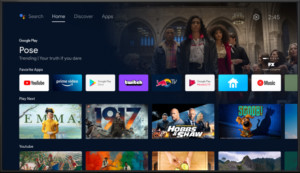Ukraine Television News: A United Front in Wartime
In the midst of Russia’s invasion, Ukrainian television has undergone a dramatic transformation. Mainstream channels have united to broadcast a 24/7 news telethon known as “United News,” providing a singular source of information for the nation during wartime. This unprecedented move has sparked debate, raising questions about the balance between national unity and media diversity in a democratic society.
The Genesis of United News
Shortly after the Russian invasion in February 2022, Ukraine’s major television channels, both public and privately owned by oligarchs, began broadcasting identical content around the clock. This unified broadcast, dubbed the United News telethon, was initially a voluntary collaboration. However, it has since been formalized into law, requiring all news channels to participate. The telethon operates with each channel taking a designated daily slot, ensuring continuous coverage across all platforms.
Justifications for a Unified Broadcast
Proponents of the telethon argue that it serves a crucial strategic purpose in the information war against Russia. Svitlana Ostapa, deputy head of Detector Media, a Ukrainian media monitoring organization, likens the telethon to an “information war equivalent of anti-aircraft systems.” She emphasizes its role in combating Russian disinformation and preventing panic among the population, drawing parallels to the disinformation campaigns that destabilized Ukraine during the 2014 annexation of Crimea. Furthermore, the collaborative format allows for efficient communication with government officials and addresses logistical challenges posed by the displacement of journalists due to the war.
Concerns Over Media Control
Critics, however, express concerns that the unified broadcast grants excessive control over the information space to President Volodymyr Zelenskiy’s administration, potentially stifling dissenting voices and promoting a propagandistic narrative. Aksenyia Kurina, a journalist and anti-censorship advocate, argues that the telethon represents an attempt by the presidential office to consolidate its grip on the media. She warns of the dangers of a heavily censored information environment and the potential for the government to become susceptible to its own propaganda. This concern is amplified by the preferential airtime given to individuals close to the president, including comedic segments featuring his former colleagues.
Language and Messaging in Wartime
The language used on Ukrainian television has also noticeably shifted, reflecting a broader societal trend. Terms like “occupiers,” “terrorists,” “orcs,” and “Rashists” are frequently used to describe Russian soldiers. Patriotic slogans and wartime rhetoric have become commonplace, with presenters often concluding segments with phrases like “Death to the enemy!” While proponents argue this reflects national sentiment and bolsters morale, critics raise concerns about the potential for hate speech and the erosion of journalistic objectivity. Ostapa notes that discussions are underway regarding the use of such language, with a potential move towards banning slogans containing profanity.
The Exclusion of Opposition Voices
Adding another layer of complexity to the situation is the exclusion of three channels owned by former President Petro Poroshenko from the United News telethon. These channels, aligned with Poroshenko’s political faction, have not been allocated airtime and are not involved in the telethon’s editorial decisions. While they initially attempted to balance the telethon with their own programming, current regulations mandate that all news channels, excluding those dedicated to light entertainment, carry the unified broadcast. Poroshenko’s channels claim to have appealed for inclusion but have yet to receive a response from the authorities. This exclusion raises questions about the inclusivity and representativeness of the United News telethon.
The United News telethon stands as a unique phenomenon in modern media, reflecting the extraordinary circumstances of wartime Ukraine. While its proponents emphasize its crucial role in unifying the nation and combating disinformation, critics raise valid concerns about media freedom and the potential for government control. As the conflict continues, the long-term impact of this unified broadcast on Ukraine’s media landscape remains to be seen.








